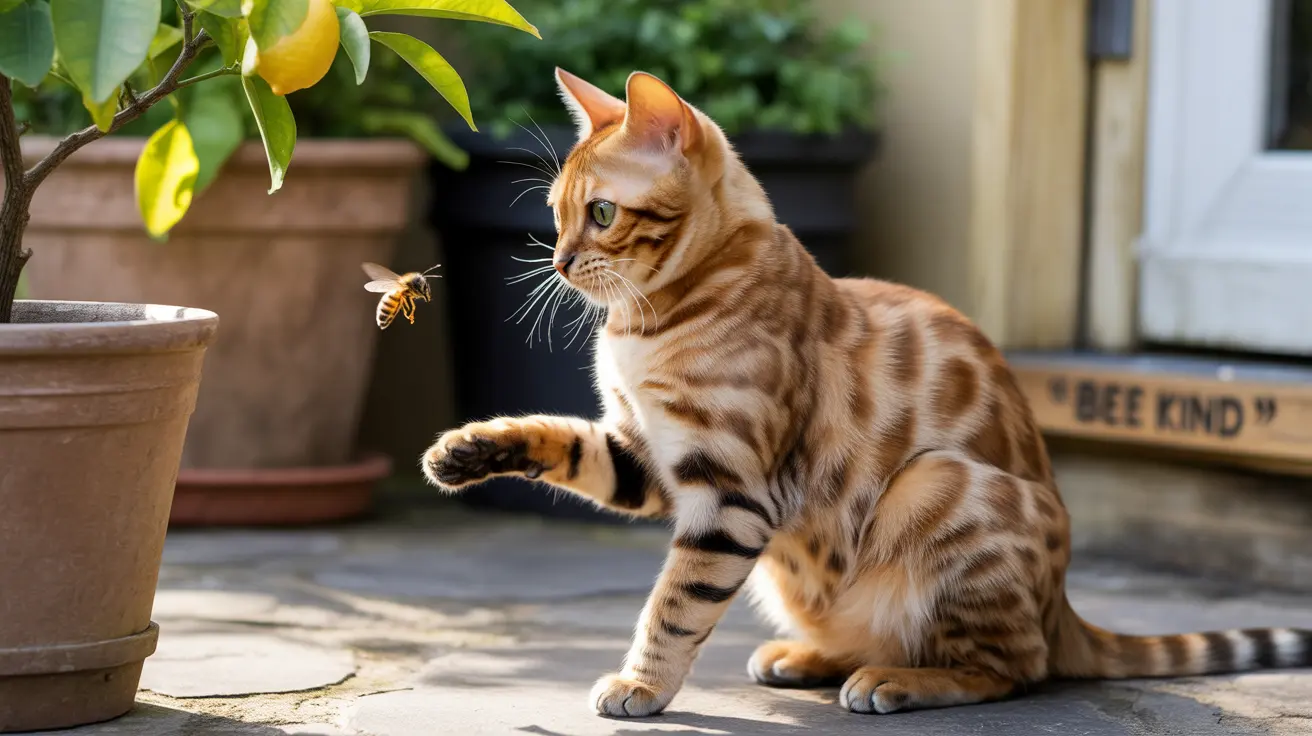If your cat has eaten a bee, quick action and careful monitoring are essential. While cats are natural hunters who often chase flying insects, encountering bees can lead to dangerous situations, especially if the bee manages to sting your cat in the mouth or throat. Understanding the risks, recognizing symptoms, and knowing when to seek emergency care can make a crucial difference in your cat's recovery.
This comprehensive guide will walk you through everything you need to know about cats who ate bees, from immediate first aid steps to potential complications and when to seek veterinary care.
Understanding Why Cats Chase and Eat Bees
Cats are instinctive hunters, naturally drawn to moving objects like flying insects. The erratic movement patterns and buzzing sounds of bees make them particularly enticing targets for our feline friends. This hunting behavior is most common during spring and summer months when bees are abundant and cats spend more time outdoors.
Immediate Signs and Symptoms
When a cat eats a bee or gets stung, several signs may appear within minutes:
- Pawing at the face or mouth
- Excessive drooling
- Sudden vocalization or crying
- Swelling around the face, mouth, or throat
- Difficulty swallowing
- Vomiting or retching
Emergency Warning Signs
Some symptoms require immediate veterinary attention:
- Severe swelling in the throat or mouth
- Difficulty breathing
- Excessive drooling
- Pale or bluish gums
- Collapse or extreme lethargy
- Multiple stings
- Signs of anaphylactic shock
First Aid Steps for Bee Stings
If you suspect your cat has eaten a bee or been stung, take these immediate steps:
- Check for the stinger and remove it using a credit card's edge (avoid tweezers)
- Apply a cold compress to reduce swelling
- Monitor breathing and overall condition
- Contact your veterinarian for guidance
When to Seek Veterinary Care
While some bee encounters result in mild reactions, others require professional medical attention. Contact your vet immediately if:
- The sting is inside the mouth or throat
- Your cat shows signs of an allergic reaction
- Breathing appears labored or difficult
- Swelling continues to increase
- Your cat becomes lethargic or unresponsive
Prevention Strategies
To minimize the risk of your cat encountering bees:
- Supervise outdoor activities
- Keep cats indoors during peak bee activity hours
- Remove or fence off flowering plants near cat areas
- Provide engaging indoor activities to reduce outdoor interest
Frequently Asked Questions
Why do cats chase and sometimes eat bees, and is this behavior dangerous?
Cats chase bees due to their natural hunting instinct and attraction to moving objects. This behavior can be dangerous as it may result in stings, particularly if the bee is caught in the mouth or throat.
What are the immediate signs that my cat has been stung by a bee, especially if stung inside the mouth or throat?
Immediate signs include pawing at the face, excessive drooling, crying out in pain, swelling around the affected area, and difficulty swallowing. Stings inside the mouth or throat are particularly dangerous due to potential airway obstruction.
How should I safely remove a bee stinger from my cat without causing more venom to be released?
Use a credit card or similar flat, stiff edge to scrape the stinger out sideways. Don't use tweezers, as squeezing the venom sac can release more venom into the wound.
What home first aid steps can I take if my cat is stung by a bee, and when should I see a veterinarian?
Apply a cold compress to reduce swelling and monitor your cat closely. See a veterinarian immediately if there's significant swelling, breathing difficulties, or signs of an allergic reaction.
How can I prevent my cat from getting stung by bees, especially during spring and summer outdoor activities?
Limit outdoor access during peak bee activity hours, create safe outdoor spaces away from flowering plants, and provide engaging indoor activities to reduce your cat's interest in chasing bees.
Conclusion
While cats who ate bees often experience only mild discomfort, being prepared for potential emergencies is crucial. Quick recognition of symptoms and appropriate response can prevent serious complications. When in doubt, always consult with your veterinarian, as they can provide the best guidance for your cat's specific situation.






